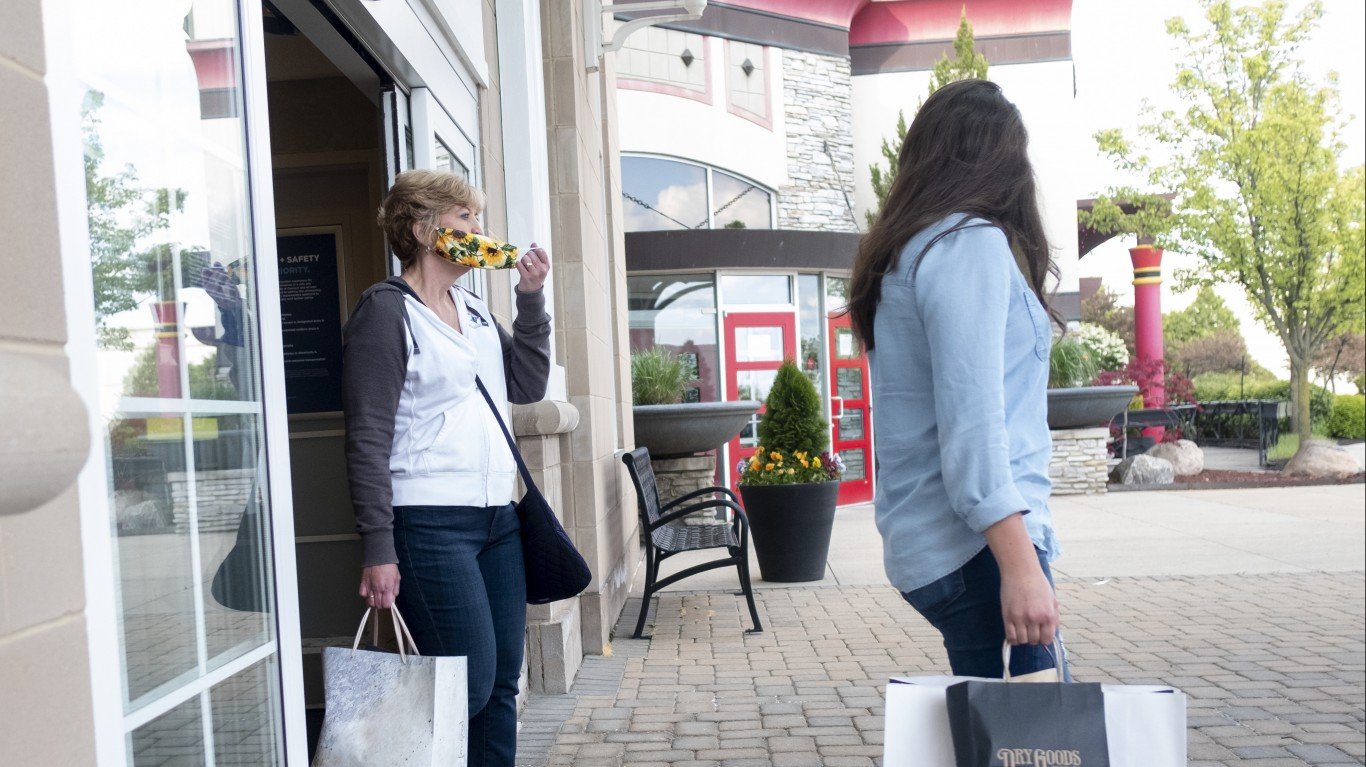

While there is economic uncertainty and high unemployment in the COVID-19 recession of 2020, there is no doubt at all that consumers have continued to shift their buying toward e-commerce rather than in-store purchases. After months of massive growth, it appears that not even online spending can post higher growth rates forever. There may still be no clear reasons for brick-and-mortar retailers to start a massive celebration yet, but those endless growth rates in online spending have started to come down.
Adobe data shows that online shopping levels slowed from June to July, and its report specifically cited brick-and-mortar retailers continuing to reopen for business as one of the reasons. That said, some local and state economies saw their reopenings partially dialed down in June and in July as the number of COVID-19 cases spiked higher.
July’s online spending was up 55% from July of 2019. Any consumer spending category in the country would love to post growth numbers that high, but sales growth in online spending had been up at over 77% in May and at 76% in June (versus the same months of 2019). July sales did remain above March and April levels, at the start of the recession. March was up 25% and April was up 49% year over year.
Adobe also cited lower consumer spending levels as lower employment and the looming cutbacks in unemployment benefits are forcing households to tighten their belts. The total e-commerce spending for July of 2020 was $66.3 billion.
Adobe’s Digital Economy Index attempts to offer real-time tracking of the digital economy. The company’s data is said to come from analyzing more than a trillion online transactions and from a pool of 100 million product SKUs. Adobe Analytics also measures transactions from what is said to be 80 of the top 100 U.S. online retailers.
All in all, Adobe has projected that e-commerce has seen an extra $94 billion since March. The first seven months of 2020 also have seen $434.5 billion in online spending.
One area of spending that is getting much more attention now is buying online and picking up at the store. Adobe sees this growth continuing. This measure ticked up by 23.3% in July over June, and Adobe cited that second wave of COVID-19 cases.
To show how the reopening affected the slower online spending growth, Adobe suggested that the states that already reopened saw an 8% smaller online sales spending increase in July, versus the states that were still under stay-at-home orders. Adobe also identified the states with the fastest and slowest online spending gains versus the same period in 2019:
- Rhode Island, New Mexico, Oregon and Vermont saw the highest increase in online spending.
- Kansas, Hawaii, Oklahoma and Iowa saw the lowest increase in online spending.
Some significant back-to-school trends are due to work-from-home and distance learning as well. These showed higher online purchases of school supplies in April, May and June. This trend also resulted in slower growth for that segment during what are usually busier periods of restocking over the summer months. Even with July’s online category spending down from the prior growth from April through June, it has seen 30% growth this year.
Clothing and apparel companies may have at least a little bit to worry about here. Apparel prices were down 4.6% in July from the prices in June, although year-over-year growth was up by 3.6%.
Adobe indicated that the current pace would have all online spending for 2020 surpassing the entire online spending in 2019 by October 5. That sets 2020 to be yet another record year for spending, because even in recessions the online spending segment seems to grow every holiday season.
If there is no vaccine or functional treatment for COVID-19, then the in-store numbers are likely to be very weak this holiday season. Many of the top retail destinations already have said they would not be opening on Thanksgiving Day, telegraphing that retailers are expecting an entirely different sort of Christmas and holiday spending in 2020.
Take This Retirement Quiz To Get Matched With An Advisor Now (Sponsored)
Are you ready for retirement? Planning for retirement can be overwhelming, that’s why it could be a good idea to speak to a fiduciary financial advisor about your goals today.
Start by taking this retirement quiz right here from SmartAsset that will match you with up to 3 financial advisors that serve your area and beyond in 5 minutes. Smart Asset is now matching over 50,000 people a month.
Click here now to get started.
Thank you for reading! Have some feedback for us?
Contact the 24/7 Wall St. editorial team.
 24/7 Wall St.
24/7 Wall St.


